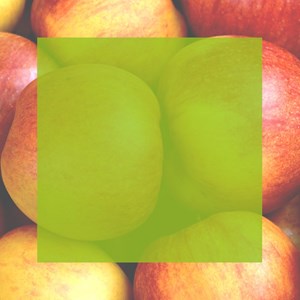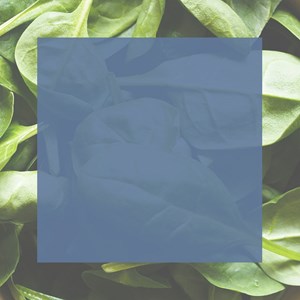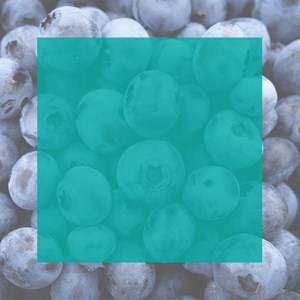In our daily lives we are bombarded by exo-toxins (those which we encounter in the environment such as cigarette smoke and car fumes) and endo-toxins (the waste by products of metabolism which the body has to expel in order to maintain health. With optimum nutritional and lifestyle choices the liver will retain its integrity and efficiency and therefore will neutralise all these toxins. Under such circumstances we will be oblivious to the hard work which is going on in there! If our diet is insufficient however, and we are subject to stress, excess tiredness and take in substances such as alcohol, damaged fats and drugs the liver’s functions will become deficient and we will start to feel the consequences. Sluggishness and a ‘wooly feeling head’ are distinct symptoms which may well be due to an overworked liver.
Here, therefore we aim to explain the two phases the liver goes through in its act of detoxification and to suggest ways in which they can be supported through dietary choices, supplementation and lifestyle adjustments.
Liver Detoxification - Stage I
In stage I, ironically, free radicals are generated. A series of oxidation and reduction reactions involving the cytochrome P450 enzyme system produces intermediate metabolites to be passed onto phase II. It is because these intermediate substances can be so reactive that a good supply of antioxidant nutrients is needed to support detoxification in the liver.
Co-enzyme Q10, bioflavonoids, Ginkgo biloba and other nutrients provide help and support stage I detoxification as they protect cell membranes and prevent oxidation of fats (both the fats ingested and the lipids forming cell membranes). Oxidised fats are a particular burden for the liver in our society as margarines and artificially saturate reduced oils are used more and more in cooking. Although we are commonly advised to avoid excess saturated fats we are no better off eating abundant quantities of artificial margarines and health spreads.
The body is accustomed to digesting natural fats such as butter (preferably organic), but finds the alien molecules in low fat spread far harder to deal with. Such substances overload the liver as they need ‘detoxifying’ before they can be used. To exacerbate the problem artificial fats are more prone to oxidative damage when heated and therefore should not be used in cooking at all.
Vitamin C, Vitamin E, Beta Carotene are well known antioxidants there are many others, Vitamin E in particular being a powerful free radical scavenger. Selenium also supports the function of Vitamin E, proving synergistic with it in the prevention of degenerative disease.
Silymarin, the active ingredient in Milk Thistle is also recognised as a useful support to liver detoxification. It helps the liver in phase I by protecting the cells (hepatocytes) from damage.
Other nutrients useful for phase I are riboflavin, niacin, magnesium, iron and phytonutrients such as indoles (from cruciferous vegetables) and the bioflavonoid quercetin.
Liver Detoxification - Stage II
Stage two not surprisingly involves the neutralisation and excretion of the metabolites formed in stage I. This is achieved by linking the reactive metabolites to another molecule which increases its water solubility and decreases its toxicity. The resulting conjugate can then be excreted via the urine or bile depending upon its size.
There are many conjugates which are used in phase II to dispose of the metabolites from phase I, each having an affinity for specific compounds. Glucuronidation is the most important process and the enzyme involved is found alongside the cytochrome P-450 system in the cells. That enzyme, UDP-glucuronosyltransferase, catalyses the binding of the phase I metabolite to glucuronic acid contained in a nucleotide.
Pathogenic bacteria can reverse glucuronidation reactions with the enzymes they produce. Calcium D glucarate found in certain vegetables and fruit can help counteract this effect, and a probiotic supplement to combat the pathogenic bacteria is also very beneficial.
Glutathione conjugation detoxifies a variety of xenobiotics by combining them with reduced glutathione. This is a tripeptide composed of glycine, cysteine and glutamic acid. The enzyme involved in this reaction helps protect cells by neutralising electrophilic xenobiotic compounds which would otherwise bind to and damage cellular constituents.
Sulphation is important in detoxifying drugs and metabolising steroids and bile acids.
Another common conjugation reaction is methylation which neutralises both endogenous and exogenous compounds. Methylation is supported specifically by betaine and folic acid.
Amino acid conjugation facilitates excretion through the urinary system. Its capacity is not particularly high however, and exposure to xenobiotics can soon saturate the system and other conjugation reactions then take over. The primary subjects of amino acid conjugation are glycine, taurine and glutamine - the latter being the main one. Glutamine’s chief role is in ammonia detoxification.
Pathological Detoxification
As total detoxification relies on the passing of metabolites from phase I onto the detoxifying conjugation of stage II problems can arise if the first stage is stimulated when phase II is still inadequate. A build up of reactive metabolites in this way can cause tissue damage and lead to disease, and will cause sensitivity to strong odours, some pharmaceutical drugs and in some cases an intolerance of caffeine.
Pathological detoxifiers have two courses of action at their disposal - slow down phase I or enhance stage II. The easiest and quickest will be to slow phase I, and if a little extra help is needed freshly prepared lemon juice has been found to inhibit phase I enzyme activity by supplying antioxidants and other beneficial phytonutrients.
Dietary Support for Liver Detoxification
The liver is best supported by a diet rich in organic, unrefined and unprocessed foods as these reduce the toxic load being placed upon it. The majority of the diet therefore should be fresh fruit and vegetables, whole grains and unrefined carbohydrates. A minimum of 1 serving of a cruciferous vegetable and 5 servings of fruit per day are considered useful.
Water is particularly useful for cleansing, both as a solute for excretion of toxins and as the solute in which enzyme controlled reactions proceed. Four pints of water per day (drunk as water and not diluting squashes or teas) are recommended. To replace caffeine containing hot drinks such as tea and coffee, warm or hot water with a herb tea such as ginger root (grated) is very refreshing and stimulating to the liver. This is most beneficial mid afternoon or early evening, at least 30 minutes before eating anything.
Supplemental Help
Multi-Vitamin & Mineral formula
The food state multi-vitamin & mineral formula is a broad spectrum of vitamins, minerals and other beneficial nutritional co-factors. These specific nutrients help to support liver function and other metabolic processes. This formula contains nutrients and additional co-factors including enzyme activators that can help re-balance and rebuild a deficiency.
Research has shown that, for example, there is a decrease in muscle strength, and the functions of the immune system also slow down with impaired liver function. This formula helps to provide some of the food nutrients that are in short supply. Particular note was made in the formula’s construction to the importance of nutrients known to help retard some aspects of the ageing process reducing a burden within the liver.
B vitamins are co-factors in many enzyme systems, including those involved in liver detoxification. Whole grains will help supply these vitamins; however a supplement is suggested for this stage. The Multivitamin and mineral complex is designed to provide the Vitamin B complex
Antioxidants.
Vitamin C is depleted by detoxification reactions, and depletion of it impairs detoxification. Therefore a daily supplement is useful to safeguard intake.
Vitamin E is a very powerful free radical scavenger and therefore a daily supplement can again be useful to safeguard intake.
Selenium is being progressively depleted from soil, and therefore may not be provided in sufficient quantities by vegetables.
Zinc is especially useful for drinkers, who need a zinc dependent enzyme in the liver to detoxify alcohol.
CoQ10 is a particularly useful antioxidant for the liver, and as explained above Bioflavonoids and Ginkgo biloba may also prove useful in Phase I.
Note
The above antioxidants nutrients can be taken in the Jersey Foodstate Antioxidant + coenzyme Q10 tablet.
Silymarin is renowned for its liver protecting properties and as such can be useful for protecting the organ from phase I free radicals.
Probiotic living in the gut are vital to general function and well being and are extremely useful in liver detoxification to help combat harmful bacteria.
Summary of Supplements to Support Liver Detoxification
1x Multi-Vitamin and mineral tablet twice daily (am and pm) for one month.
1 x Antioxidant + Coenzyme Q10 tablet twice daily (am and pm) for one month.
1 heaped teaspoon of E500 Probiotic until finished (about 2 weeks)





